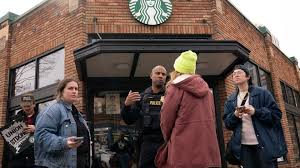A dispute between Starbucks and its workers has heated up as over 1,200 employees have initiated strikes nationwide to protest against a new dress code policy that came into effect recently. The unrest has seen walkouts in around 100 stores across the country, with Starbucks Workers United spearheading the movement, citing the exacerbation of existing understaffing issues by the new policy.
The clash between the union and the company has led to a stall in negotiations for a new contract to address staffing and pay concerns. The dress code, which mandates baristas to wear a solid black top, is at the center of the controversy. Starbucks introduced this policy without consulting Workers United, sparking outrage among employees who feel it diverts attention from core issues affecting staff well-being.
According to Jasmine Leli, a union bargaining delegate and Starbucks barista from Buffalo, New York, the dress code issue is a distraction from crucial matters that demand attention and resolution. Leli emphasized that instead of focusing on trivial dress code regulations, Starbucks should prioritize addressing the essential needs of its workforce.
Starbucks, on the other hand, asserts that the uproar over the simplified dress code represents a minority of its locations and has led to delays in negotiations with workers. Additionally, the company argues that less than 1% of stores have been affected by the strikes, implying that the majority of its over 10,000 locations continue to operate as usual.
The new dress code requires baristas to wear a solid black top, along with bottoms in shades of black, khaki, or blue denim, aimed at complementing the iconic green apron that has been synonymous with Starbucks since its inception in 1987. The policy revamp seeks to streamline the company's visual identity and create a more consistent brand experience for customers across all North American stores.
While Starbucks insists that the dress code update is minimal and necessary for enhancing its brand image, workers argue that it is an unnecessary imposition that disregards their feedback and exacerbates existing challenges such as understaffing and low wages. The clash between Starbucks and its employees highlights broader issues within the company, revolving around labor rights, fair contracts, and employee welfare.
In response to the strikes and criticism, Starbucks CEO Brian Niccol emphasized the company's commitment to providing a fair and supportive work environment for its employees. Niccol's leadership has been marked by efforts to streamline operations, boost employee benefits, and redirect the company's focus back to its coffeehouse roots. Initiatives include increasing scheduling consistency, internal promotions for retail leadership roles, and simplifying the menu to enhance efficiency and innovation.
Despite the ongoing discord between Starbucks and its workforce, the company remains resilient, with most of its locations unaffected by the strikes. As negotiations continue between Starbucks Workers United and the company, the outcome of the dispute could have broader implications for labor relations within the coffee giant and the service industry at large. The clash underscores the importance of addressing employees' concerns and fostering a harmonious work environment to ensure the long-term success of businesses like Starbucks.

